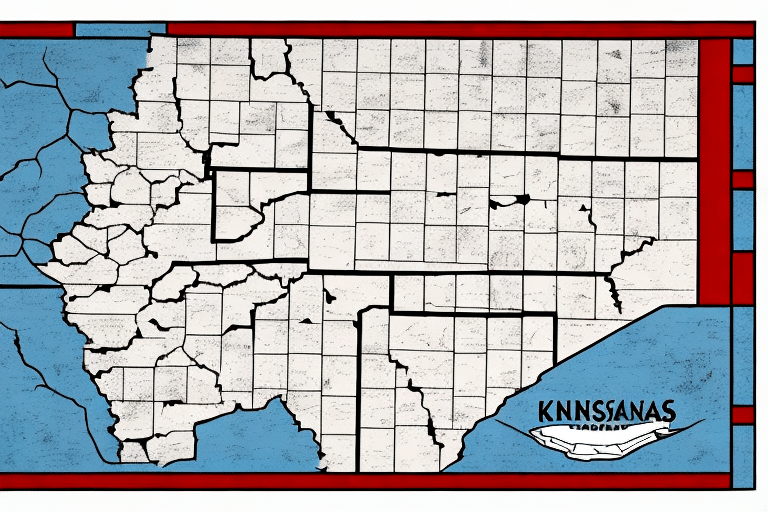Crafting an Effective Truck Abandonment Policy
As a business owner or property manager, ensuring the safety and security of your property is paramount. However, despite best efforts, abandoned vehicles—particularly trucks—can pose significant challenges. Abandoned trucks can lead to property damage, create safety hazards, and introduce potential legal liabilities. Therefore, establishing a well-defined truck abandonment policy is crucial.
The Importance of Establishing a Truck Abandonment Policy
Creating a clear and concise truck abandonment policy is essential for any business owner or property manager. This policy provides a structured framework for identifying, removing, and disposing of abandoned trucks from your property. It mitigates risks and costs associated with abandoned trucks, ensuring your property remains safe and secure. According to the Federal Highway Administration, abandoned vehicles can decrease property value and deter potential customers.
Maintaining Aesthetic Appeal
One key benefit of a truck abandonment policy is preserving the aesthetic appeal of your property. Abandoned trucks can be unsightly and negatively impact the overall appearance. A prompt removal policy helps maintain the visual standards of your property, contributing to a positive impression for visitors and clients.
Compliance with Local Regulations
Another critical reason to establish a truck abandonment policy is to comply with local regulations and laws. Many cities and municipalities have specific rules regarding the removal and disposal of abandoned vehicles. Adhering to these regulations helps avoid potential fines and legal complications. For instance, the National Highway Traffic Safety Administration provides guidelines that can help shape your policy.
Understanding the Risks and Costs of Truck Abandonment
Before crafting a comprehensive truck abandonment policy, it's important to understand the potential risks and costs associated with abandoned trucks. These include property damage, lost revenue, legal fees, and environmental harm.
Property and Environmental Risks
Abandoned trucks can cause significant property damage through exposure to the elements and vandalism. They may also release hazardous materials, leading to environmental contamination. The Environmental Protection Agency highlights the dangers of improper disposal of vehicle fluids and materials.
Increased Security Concerns
Abandoned trucks can attract criminal activities such as theft and vandalism. They may become hotspots for illegal activities, increasing security risks for the surrounding area. Implementing a stringent abandonment policy reduces these vulnerabilities.
Cost Implications
The longer a truck remains abandoned, the more costly it becomes to remove. Costs can escalate due to towing, dismantling, and environmental cleanup. According to industry reports, the average cost of removing an abandoned vehicle can range from $200 to $1,000 depending on the location and condition of the truck.
Key Elements of a Comprehensive Truck Abandonment Policy
Understanding the importance of a truck abandonment policy leads us to explore its key components:
Policy Statement
A clear policy statement outlines your organization's stance on abandoned trucks. It defines the purpose of the policy, the scope of its application, and the responsibilities of various stakeholders in enforcing it.
Identification Guidelines
Establish criteria for what constitutes an abandoned truck, including the duration of abandonment and signs of neglect. This section should also detail the process for verifying ownership and reporting abandoned vehicles.
Communication Plan
An effective communication strategy ensures that relevant parties—such as vehicle owners, law enforcement, and property staff—are informed promptly. This facilitates coordinated efforts in addressing abandonment issues.
Removal Procedures
Detail the steps for safely and efficiently removing abandoned trucks. This includes towing protocols, environmental safeguards, and proper disposal methods to comply with legal standards.
Legal Compliance
Ensure your policy aligns with local, state, and federal laws regarding vehicle abandonment. This section should cover necessary permits, notification requirements, and legal recourse in cases of non-compliance.
Employee Training
Educate employees on the policy's importance and their roles in its enforcement. Regular training sessions can enhance awareness and ensure consistent application of the policy.
Regular Inspections
Implement routine property inspections to identify and address abandoned trucks promptly. A scheduled inspection routine helps maintain property standards and prevents long-term issues.
Best Practices for Enforcing Your Truck Abandonment Policy
Effective enforcement of your truck abandonment policy relies on several best practices:
Consistency in Enforcement
Apply the policy uniformly to all abandoned trucks to ensure fairness and avoid legal challenges. Consistent enforcement builds credibility and deters future abandonment.
Comprehensive Documentation
Maintain detailed records of all incidents, actions taken, and communications related to abandoned trucks. Documentation provides accountability and supports legal compliance.
Clear Communication
Communicate the policy to all stakeholders, including employees, tenants, and customers. Visible signage and information on your website can increase awareness and compliance.
Proactive Inspections
Conduct regular inspections to identify abandoned trucks early. Proactive measures allow for quicker resolutions and minimize potential damages.
The Benefits of a Well-Defined Truck Abandonment Policy
Implementing a comprehensive truck abandonment policy offers numerous advantages:
- Ensures the safety and security of your property
- Minimizes environmental damage
- Reduces potential legal liabilities
- Prevents loss of revenue due to property damage
- Ensures compliance with relevant regulations
- Maintains the aesthetic appeal of your property
Additionally, a well-defined policy enhances your organization's reputation by demonstrating a commitment to property maintenance and community standards. Efficient removal of abandoned trucks also optimizes property use and operational efficiency.
Real-Life Examples of Successful Truck Abandonment Policies
Many organizations have effectively implemented truck abandonment policies. For example, the City of Santa Cruz, California launched a program allowing residents to report abandoned vehicles, resulting in the removal of hundreds of abandoned trucks and improved city aesthetics.
Similarly, the City of Seattle, Washington established a dedicated team that responds to abandoned vehicle reports, removing them within 72 hours. This initiative has significantly reduced abandoned vehicles and enhanced urban cleanliness.
In the private sector, a major U.S. retail chain enforces a policy requiring delivery trucks to vacate store parking lots within a specified timeframe. This policy has effectively prevented parking space congestion and minimized accident risks.
Conclusion: Taking Action to Protect Your Business Against the Costs and Risks of Truck Abandonment
Implementing a comprehensive truck abandonment policy is essential for any business or property manager. Such a policy minimizes risks and costs associated with abandoned vehicles, ensures property safety and security, and guarantees compliance with relevant regulations.
By incorporating the key elements outlined above and adhering to best practices, you can safeguard your business from the detrimental effects of truck abandonment. Regular monitoring, employee training, and proactive enforcement are critical to the policy's effectiveness. Ultimately, a robust truck abandonment policy fosters a safer, cleaner, and more efficient environment for your employees and customers.
Continuous evaluation and improvement of your policy will ensure it remains effective and adapts to any emerging challenges. Prioritizing truck abandonment management not only protects your assets but also enhances your organization's reputation and operational success.






















